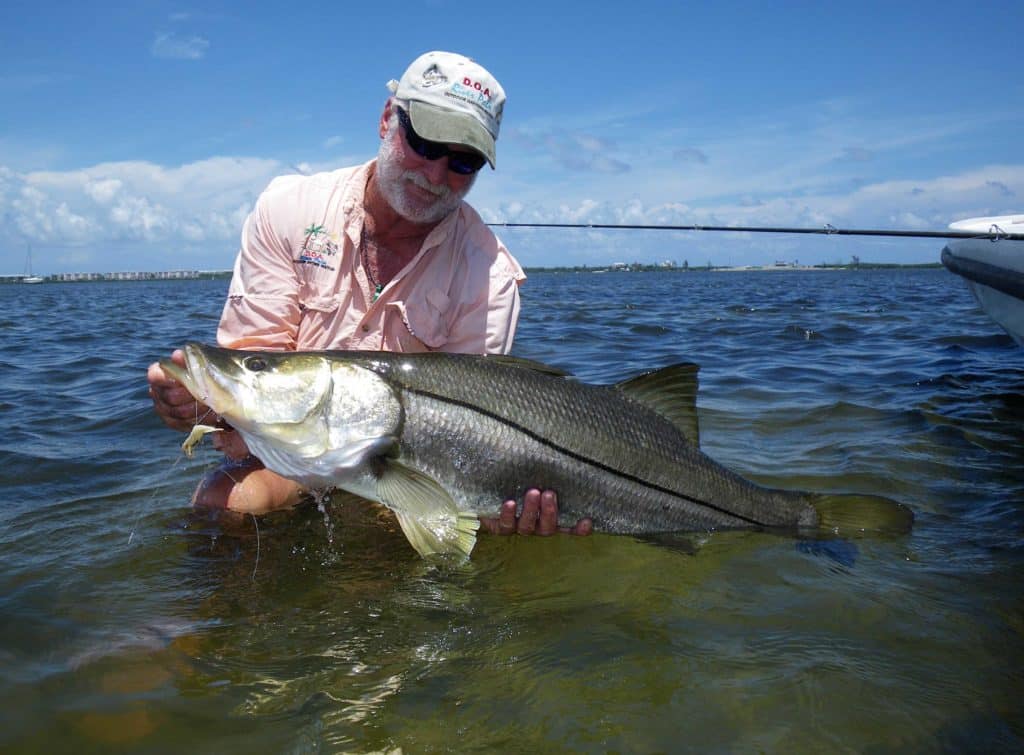
[Editor’s note: Experts advise extra care when fishing on any spawning species. Use adequate tackle, and leave the fish in the water for release, whenever possible.]
If you’ve ever wondered why Florida’s Atlantic snook season remains open in May but closes along the Gulf of Mexico coast, Everglades National Park and the Florida Keys, here’s the reason: Keeper snook are much more susceptible to being caught in the western and southern regions of Florida in May, so officials deemed the earlier Gulf closing prudent.
The state took even more dramatic measures last year because of a prolonged west coast red tide, closing the season for snook, as well as for seatrout and redfish, from Pasco County (just above Tampa) south to Naples.
Anglers could still catch and release snook in those waters during the closure, and they can also release fish during the normal closed season— May 1 through August 31. East coast anglers also can catch and release snook during their closed season—June 1 through August 31. But during May, right-coasters can still keep 1 per angler per day between 28 and 32 inches.
In general, the late spring/summer closures coincide with the snook’s spawning season, when schools gather at passes and inlets, making the fish easy targets for anglers, especially those with a well full of live bait.
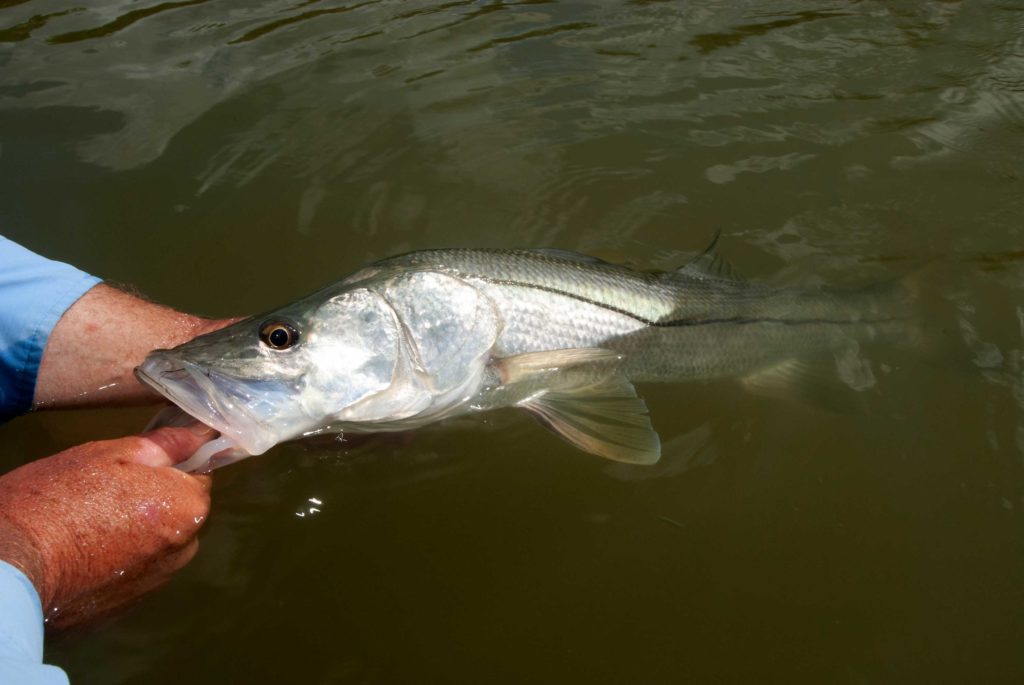
Live Lines
Capt. Ozzie Fischer of Fort Myers in southwest Florida, who grew up fishing for snook on Pine Island Sound, prefers live pilchards this time of year, but he also keeps some threadfin herring.
“You catch way more on pilchards, and with thread herring, you catch bigger fish,” he says. “A big snook will eat a little pilchard or a big pilchard, but you fish a thread herring, and a lot of times a big snook hits that when it won’t hit anything else, and the little snook eat the pilchards.”
Herring can become fragile in a well with pilchards. When Fischer live-chums with pilchards, he waits until he sees a big fish before baiting up with herring.
Fischer downsizes his snook tackle in May because of the water’s clarity. He fishes 8- to 12-pound-class spinning rods with 15-pound braided mainline and a 3-foot length of 25-pound fluorocarbon leader that he attaches with a surgeon’s knot. During the summer, when rainfall discolors the water, he uses a 40-pound fluorocarbon leader. “The big fish chew through it [25-pound leader] sometimes,” Fischer says, “but you can’t lose ‘em if you don’t hook ‘em.”
Fischer uses 2/0 to 5/0 circle hooks, depending upon bait size. He ties the hooks to the leader with an improved clinch knot, and hooks all of his baits through the nose.
“If you belly-hook a bait, when you reel it in, the bait spins. By nose-hooking the bait, you give yourself another chance to get a bite when you’re reeling it in because it’s swimming,” he says. “I cannot tell you how many big snook I’ve caught just reeling my bait real slow. Sometimes it triggers them, just like slow-trolling. The bait’s been kind of sitting there, not moving around much. You start reeling and moving it, and a fish grabs it.”
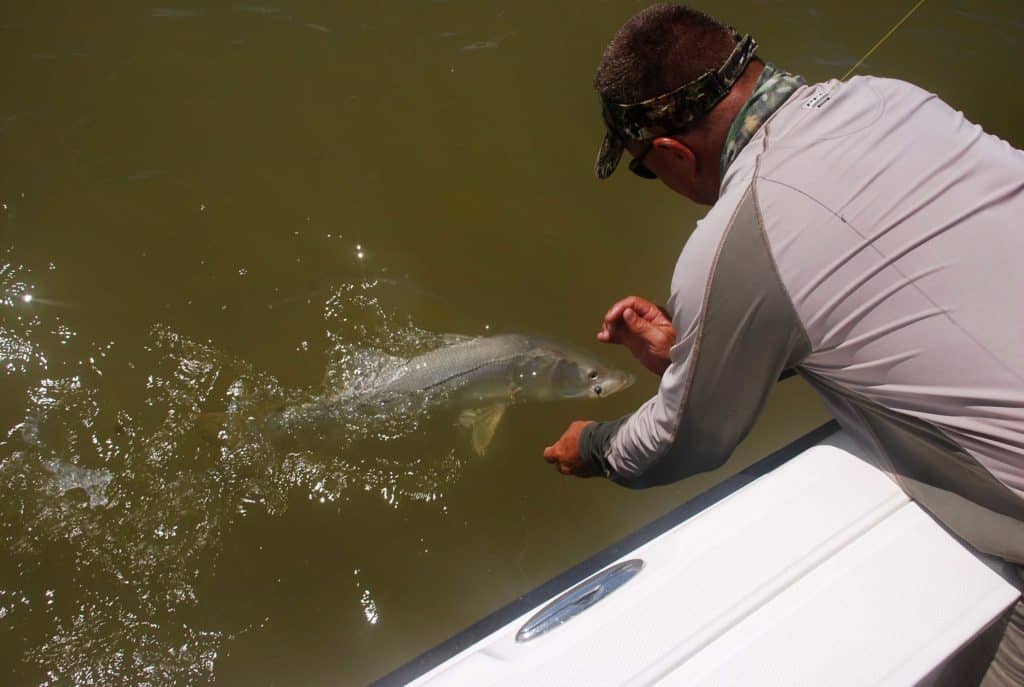
Salt and Fresh
Capt. Brian Sanders, who fishes Everglades National Park out of Chokoloskee Island on the southwest coast of Florida, says a lack of fresh water flowing into the park has made fishing tough for the past two years. The condition, called hypersalinity, means that the water in the rivers that flow through the Everglades into the Gulf is too salty.
“The fish want that fresh water,” Sanders explains. “Three or four years ago (in April and May) we’d see fish in the river mouths and around the adjacent outside islands. Now, I can put a whole day in there and maybe catch snook, and most of them are small. It has really changed what those fish are doing.”
Sanders can catch bait in the Gulf of Mexico and motor 30 miles due east into the Everglades—where he has traditionally caught bass, snook and alligator gar—and the saltwater baitfish remain lively. Significant rainfall could improve the situation for anglers fishing the Gulf side of the park, he says.
Despite the salty conditions, Sanders says that on a good day, his customers still catch 20 or 30 snook, most under 25 inches. A slow day means five or six fish. “Try to find the freshest water in the area,” he advises, “whether it’s in a creek, a bay, or all the way at the top of a river.”
He prefers to fish live pilchards or finger mullet and lures such as jigs, topwater plugs, swimbaits and soft plastics around structure such as fallen trees and oyster bars as well as where feeder creeks empty into a main river system. He uses spinning rods with 20-pound braided line and 40-pound fluorocarbon leaders tied to a 2/0 to a 4/0 hook. Skilled anglers can opt for baitcasting outfits to pitch lures under overhanging mangroves.
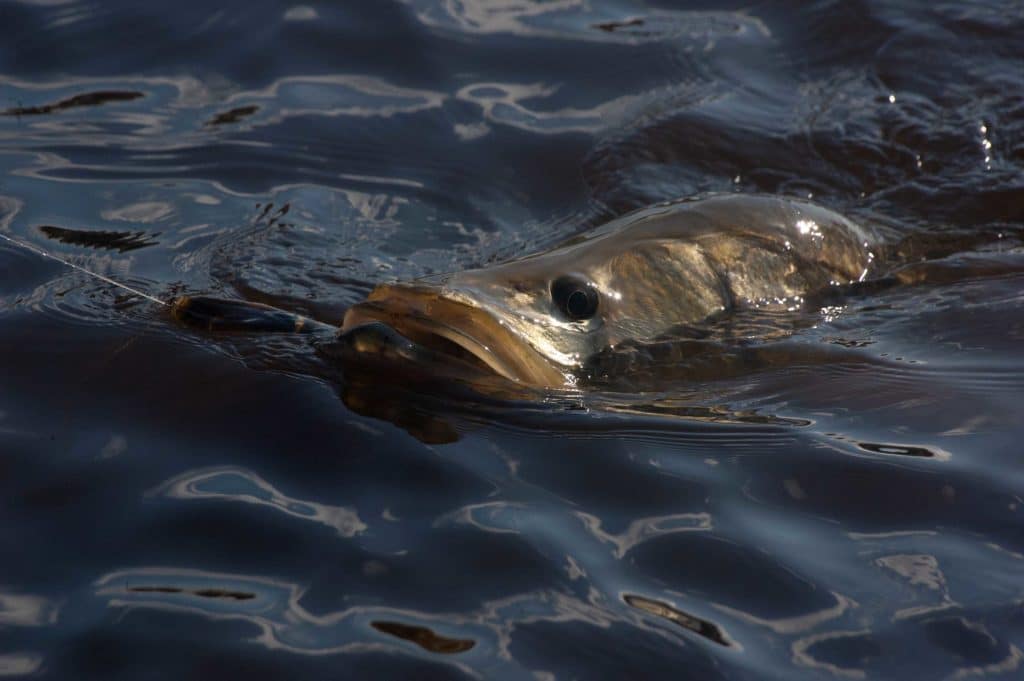
Spillway Special
Rain also plays a role in east coast snook fishing. Snook expert Tom Greene of Lighthouse Point, near Ft. Lauderdale, says that when it rains, spillways open to dump the excess water into the Intracoastal Waterway, and snook wait to feed on the bluegills, shad and shiners that sweep through the water-control structures.
Top spillways include Cypress Creek in Pompano Beach, Hillsboro in Boca Raton, C-15 in Delray Beach, and C-16 in Boynton Beach.
“Watch the weather,” Greene advises. “When it rains, all of the snook will be at the spillways. The snook know when the water’s going to run.”
To fish the spillways, Greene uses a ½- or 3/8-ounce jig to hook a live or dead bluegill, shad or shiner up through the bottom jaw and out through the top. He casts the bait into the fast-moving water at the mouth of the spillway and bounces the jig on the bottom.
Other good snook spots include saltwater canals feeding into the Intracoastal as well as the ICW itself. Greene says trolling shallow-running jerkbaits such as a red-and-white Bomber Long A can be very effective.
Greene recommends using a baitcasting rod with 30- to 50-pound braided line. He ties a Bimini twist in the braid and uses a TG knot to attach it to several feet of 50-pound fluorocarbon leader. He ties a loop knot to the jighead.
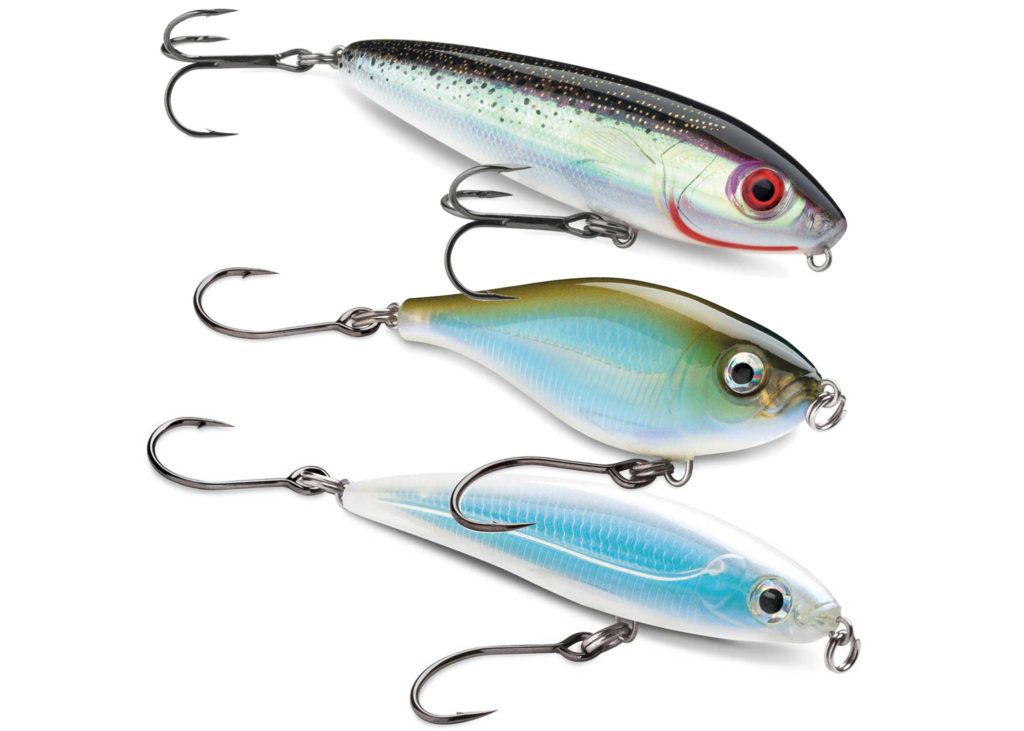
Lucky Lures
In the Indian River around Sebastian, on Florida’s central east coast, Capt. Glyn Austin fishes snook with topwater lures and jerkbaits, using 7-foot spinning rods. His favorite lures include a Rapala Skitter Walk and two Rapala sub-surface lures—the X-Rap Twitchin’ Mullet and X-Rap Twitchin’ Minnow.
When he fishes open water, he spools up with 10-pound braided line and a 20-pound monofilament leader for longer casts. If he fishes mangrove shorelines and docks, he uses 15- or 20-pound braid with a 30-pound leader. If he switches from plugs to live finger mullet, he ties on a 4/0 J-hook or a 5/0 circle hook.
Read Next: Catch More Snook With These Tips and Techniques
“I fish mangrove shorelines that are holding bait, and I fish in the trees with artificials as much as I can,” Austin says. “Typically, the snook are tight to trees.”
And although Austin says he prefers to release snook even during the open season, he acknowledges that May is the last chance for several months to bring home a keeper for dinner. Once closed, snook season—on both coasts—remains shuttered through August.








